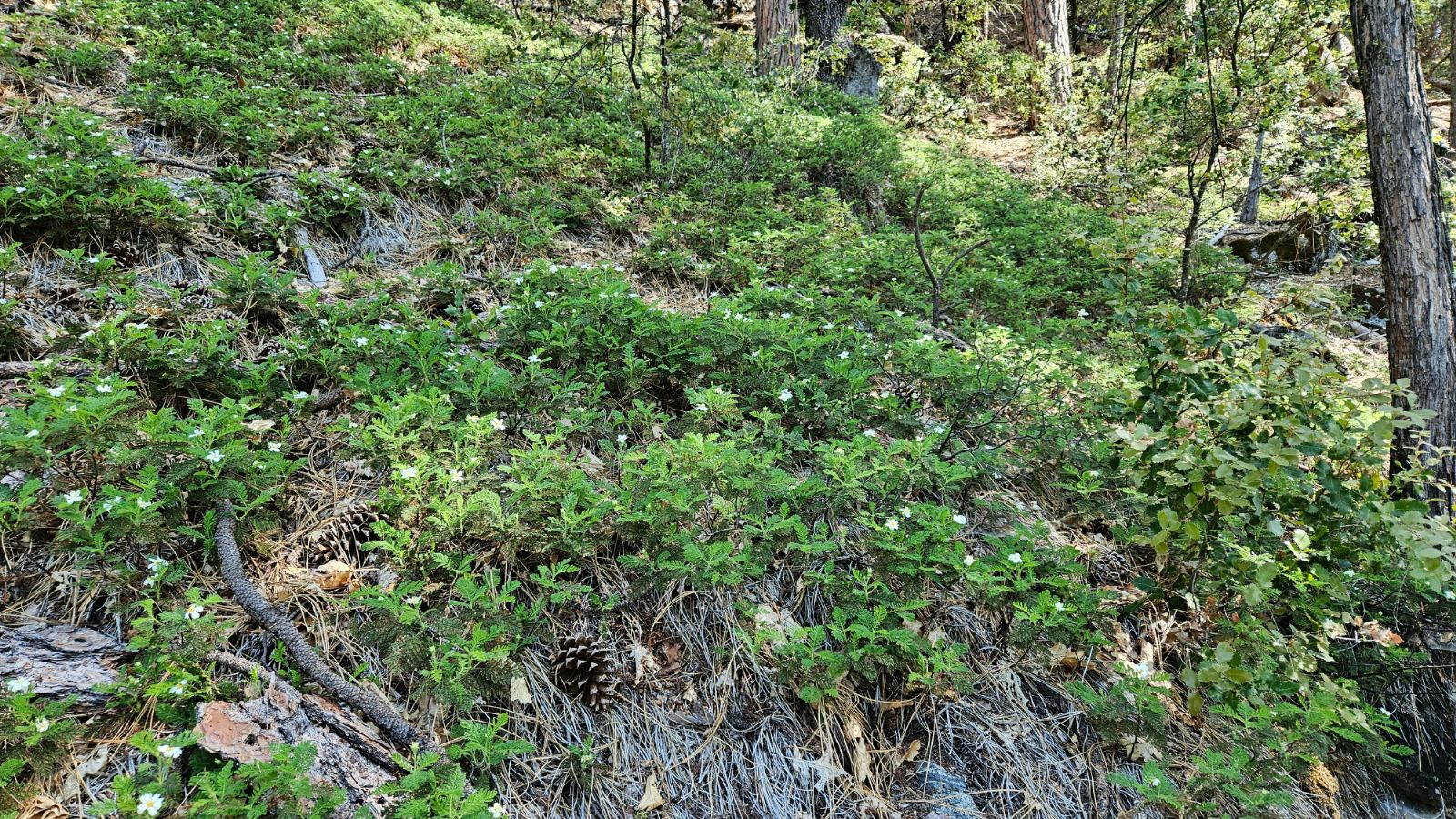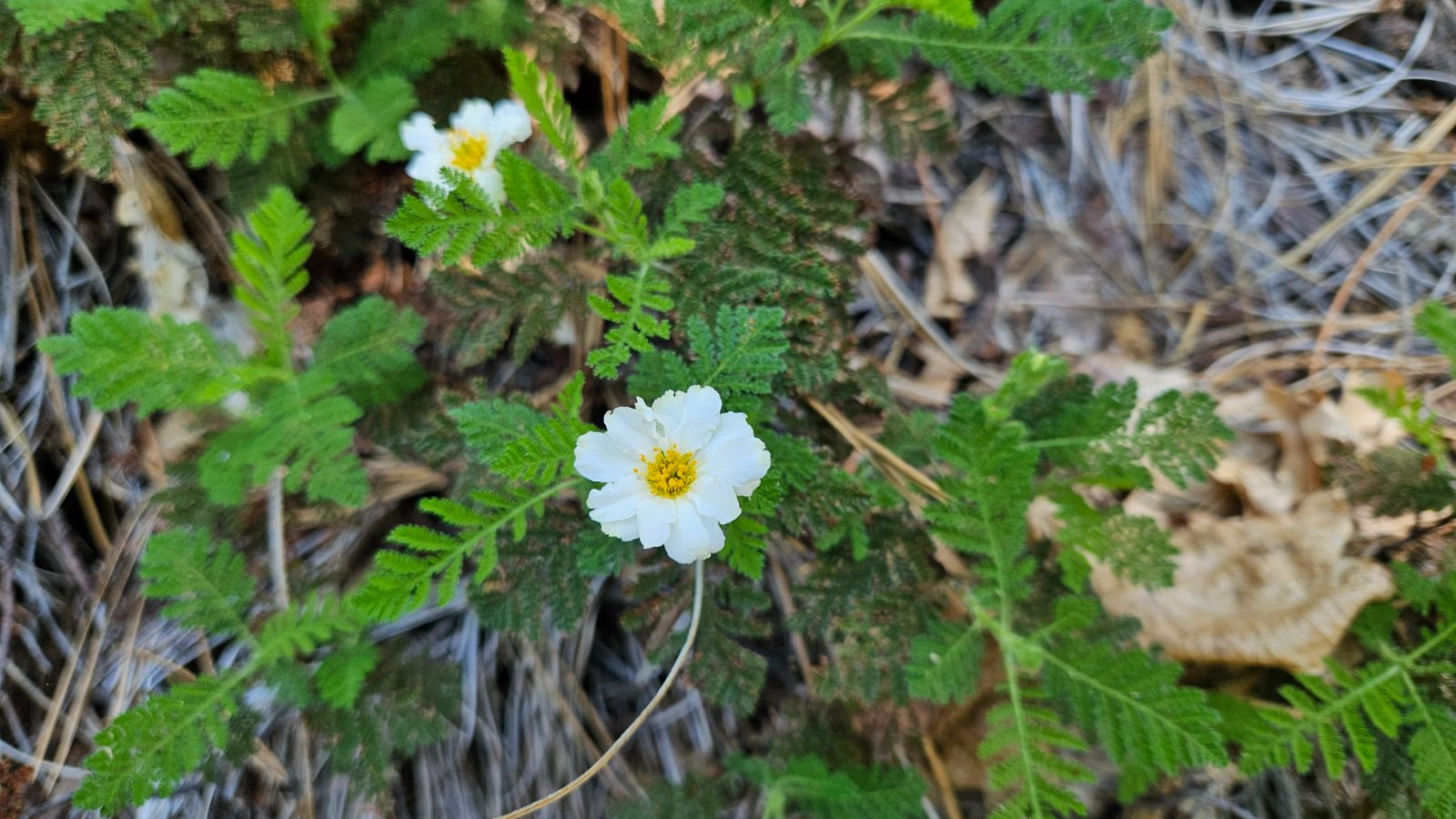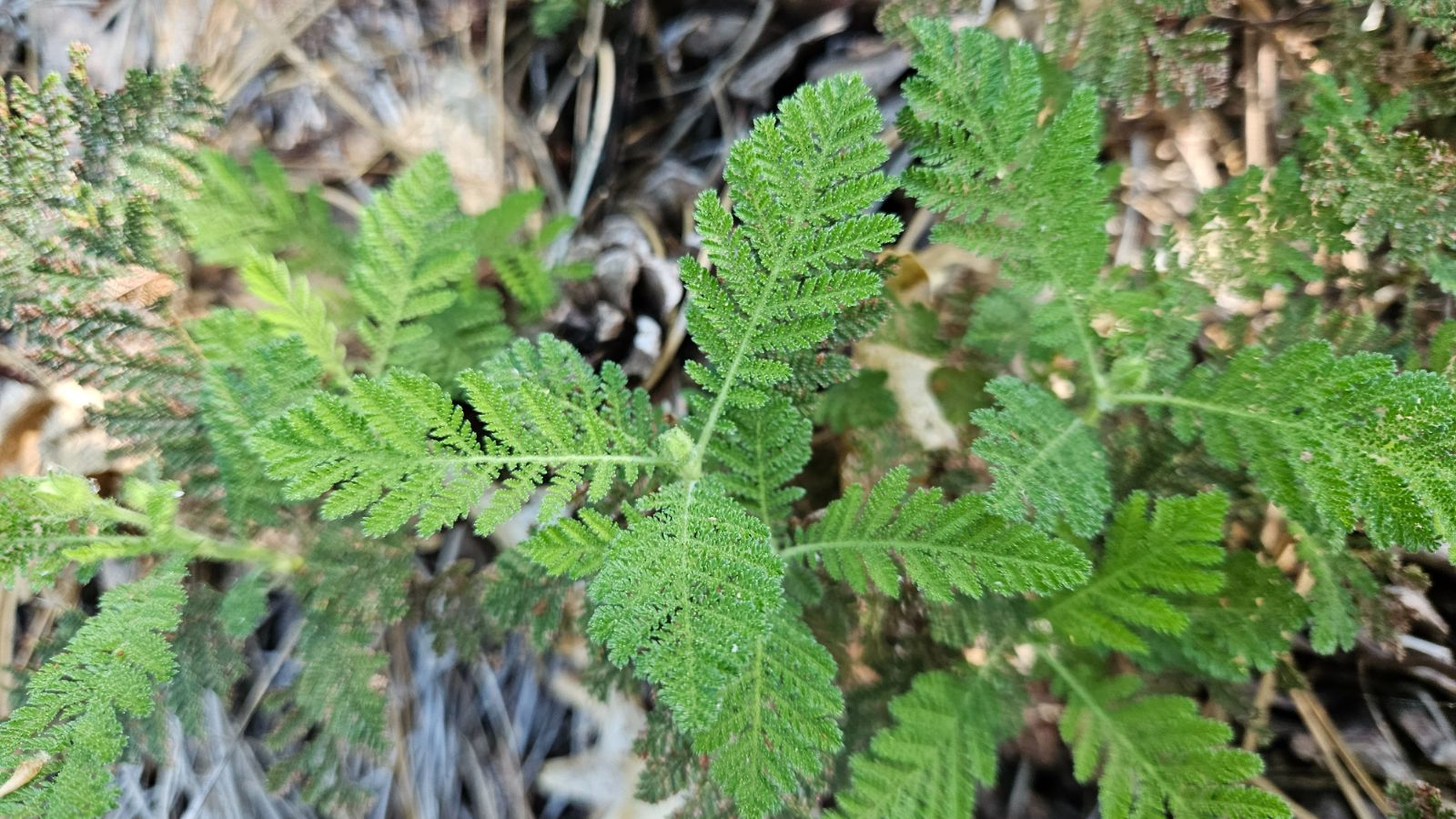Chamaebatia foliolosa
Credits
Article from Bean's Trees and Shrubs Hardy in the British Isles
Recommended citation
'Chamaebatia foliolosa' from the website Trees and Shrubs Online (treesandshrubsonline.
Genus
Other taxa in genus
A semi-evergreen shrub 2 to 3 ft high; young shoots, leaf-stalks and flower-stalks covered with grey down and stalked glands. Leaves fern-like, 11⁄2 to 21⁄2 in. long, ovate in main outline, but made up of countless tiny hairy leaflets 1⁄16 in. long, tri-pinnately arranged. Flowers white, 1⁄2 in. across, petals five; receptacle (calyx-tube) funnel-shaped to cup-shaped with five lanceolate lobes, the whole downy and glandular; stamens numerous, yellow; fruit dry, obovoid, enclosed by the calyx. The flowers are produced four to eight together on terminal slender-stalked corymbs 2 to 4 in. long and open in June and July. Bot. Mag., t. 5171.
Native of California, one of its sites being the Big Tree Grove, Calaveras. It was discovered by Col. Frémont on the Sacramento Mountains in 1844 and collected there by Hartweg in 1848. Soon after Messrs Veitch imported living plants. It bears a strong resemblance to Chamaebatiaria millefolium and has a similar pleasant balsamic odour, but the fruit of that species divides longitudinally when ripe and its short-stalked flowers come numerously in terminal compound pyramidal panicles. Chamaebatia foliolosa is not so hardy as the chamaebatiaria and requires a sunny corner where the soil is light and well-drained; even then it is probably only suitable for the southern counties.



